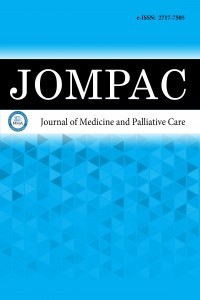1.
Balthazar EJ, Robinson DL, Megibow AJ, Ranson JH. Acutepancreatitis: Value of CT in establishing prognosis. Radiology.1990;174(2):331-336.
2.
Mortele KJ, Wiesner W, Intriere L, et al. A modified CT severityindex for evaluating acute pancreatitis: Improved correlationwith patient outcome. Am J Roentgenol. 2004;183(5):1261-1265.
3.
Petrov MS, Windsor JA. Classification of the severity ofacute pancreatitis: how many categories make sense? Am JGastroenterol. 2010;105(1):74-76.
4.
Tenner S, Baillie J, DeWitt J, Vege SS. American College ofGastroenterology Guideline: management of acute pancreatitis.Am J Gastroenterol. 2013;108(9):1400-1415.
5.
Banks PA, Bollen TL, Dervenis C, et al. Classification of acutepancreatitis—2012: revision of the Atlanta classification anddefinitions by international consensus. Gut. 2013;62(1):102-111.
6.
Working Group IAP/APA Acute Pancreatitis Guidelines. IAP/APA evidence-based guidelines for the management of acutepancreatitis. Pancreatology. 2013;13(4):e1-e15.
7.
Wu BU, Johannes RS, Sun X, Tabak Y, Conwell DL, Banks PA.The early prediction of Mortality in acute pancreatitis: a largepopulation-based study. Gut. 2008;57(12):1698-1703.
8.
Gardner TB, Vege SS, Pearson RK, Chari ST, Topazian MD, ClainJE. Fluid resuscitation in acute pancreatitis. Clin GastroenterolHepatol. 2007;5(6):636-641.
9.
Mounzer R, Langmead CJ, Wu BU,b et al. Comparison ofexisting clinical scoring systems to predict persistent organfailure in patients with acute pancreatitis. Gastroenterology.2012;142(7):1476-1482.
10.
De Waele JJ, Leppäniemi A, De Keulenaer B, De Laet I.Abdominal sepsis. Curr Opin Crit Care. 2013;19(6):591-597.
11.
Bollen TL, Singh VK, Maurer R, et al. A comparative evaluationof radiologic and clinical scoring systems in the earlyprediction of severity in acute pancreatitis. Am J Gastroenterol.2011;106(10):1749-1754.
12.
Fagenholz PJ, Castillo CF, Harris NS, Pelletier AJ, Camargo Jr CA,US Emergency Department Acute Pancreatitis Severity StudyGroup. Increasing United States hospital admissions for acutepancreatitis, 1988-2003. Ann Epidemiol. 2007;17(7):491-497.
13.
Marra F, Renzulli M, Zerboni G. Acute pancreatitis:Multidisciplinary management and emerging therapies. World JGastroenterol. 2019;25(32):4163-4171.
14.
Tenner S, Sica G, Hughes M, Noordhoek E. Relationshipof necrosis to organ failure in severe acute pancreatitis.Gastroenterology. 2003;124(4):A219.
15.
Johnson CD, Abu-Hilal M, Williamson RC. A radiologicalscoring system for severity of acute pancreatitis. Pancreas.2004;29(4):301-312.
16.
De Bernardinis M, Violi V, Roncoroni L, et al. Contribution ofimaging and fine needle aspiration cytology to the diagnosis ofchronic pancreatitis: a study in 65 consecutive patients. Dig LiverDis. 2003;35(11):833-839.
17.
Petrov MS, van Santvoort HC, Besselink MG, van der HeijdenGJ, Windsor JA, Gooszen HG. Early endoscopic retrogradecholangiopancreatography versus conservative management inacute biliary pancreatitis without cholangitis: a meta-analysis ofrandomized trials. Ann Surg. 2010;251(4):656-664.,
18.
Erdogan MÖ, Hokenek NM. How to score acute pancreatitis inthe emergency setting: five systems against ED-SAS. Signa Vitae.2021;1(8).
19.
Hökenek UD, Aydıner Ö, Kart JS, Arslan G, Saracoglu KT.Evaluation of the effect of pancreatic volume on mortality inpatients with acute pancreatitis. Am J Emerg Med. 2023;63:38-43.
20.
Ibrahim A, Bayramoglu B, Hokenek NM, Tekyol D. Lactateclearance during the first 2 hours after hospital admission: auseful biomarker for predicting 30-day mortality in patients withdiabetic ketoacidosis. Int J Clin Pract. 2021;75(7):e14204.
21.
Hokenek NM, Seyhan AU, Erdoğan MÖ, Tekyol D, YılmazY, Korkut S. Evaluation of blood gas analysis as a mortalitypredictor. South Clin Ist Euras. 2019;30(3):228-231.

